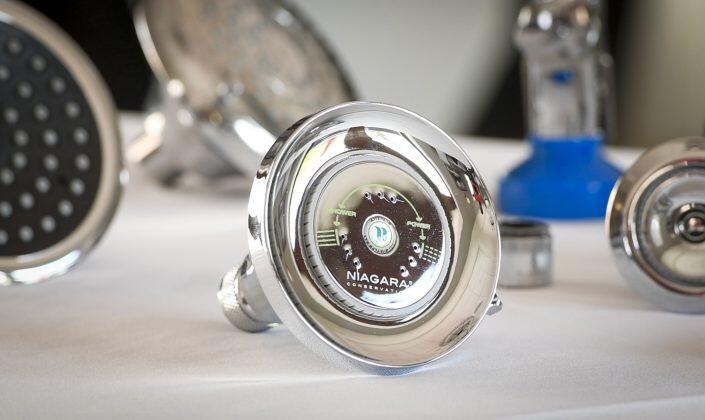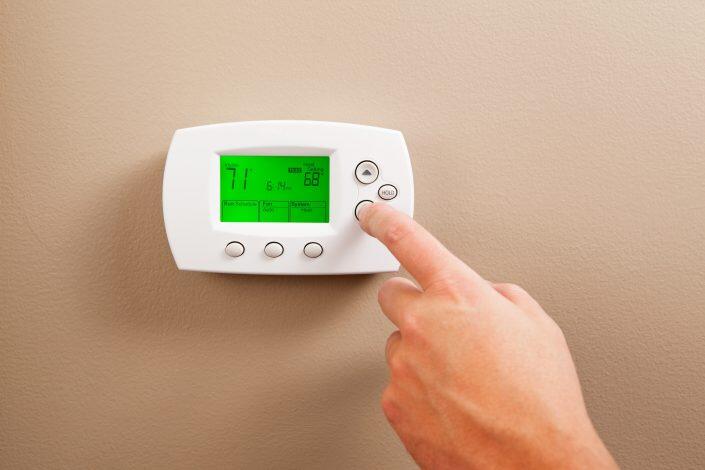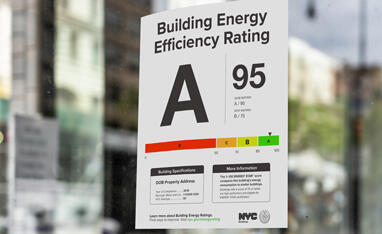New York City’s Climate Mobilization Act, with its ambitious long-range emission reduction goals, is critical to addressing the global climate crisis.
But it also presents very real challenges for multifamily building owners and managers, who must navigate the city’s new Benchmarking Law, with its energy efficiency grading system, while dealing with the financial and operational impacts of the COVID-19 pandemic.
And while compliance is voluntary for now, punitive damages will follow within the next few years as the city strives to reach net zero emissions by 2050.
The good news? There are a number of no- to low-cost ways to boost energy efficiency that improve not only your building’s benchmarking score but its profitability and value, too. Working with its energy efficiency implementation partner Leidos, National Grid offers a Benchmarking Program that starts with a no-cost walk-through and assessment of your building’s current performance, identifies easy-win opportunities you can take advantage of now, creates a roadmap for tackling more ambitious projects later, and supports you through every step of the process.
On the “easy win” side are quick fixes like low-flow showerheads and aerators, installed at no cost, and fixed rebates on small equipment upgrades that provide a quick return on investment.

May 12, 2021 / National Grid’s Direct Install Program Plays Critical Role in Lake George Water Conservation. (Photo by Mike Roy)
Direct Install Program
National Grid’s Direct Install program offers multifamily buildings no-cost installation of small, high-efficiency equipment that, when implemented in every dwelling unit, can make a big impact on the building’s performance while reducing residents’ energy bills. It includes:
- Low-flow showerheads and faucet aerators. Low-flow showerheads and bathroom and kitchen faucet aerators can make a significant impact on energy costs. And they can be installed in each dwelling unit at no cost through the Direct Install program. Replacing conventional showerheads alone with low-flow models can reduce water usage by up to two gallons a minute for an average savings of up to 8,212 gallons of water annually. Installing aerators in faucets can save another gallon per minute. It also reduces natural gas usage in water heaters. All this is done without impacting the comfort of residents with no noticeable difference in water pressure.
- Thermostatic shut-off valves on showerheads. These reduce hot water waste during the warm-up process by cutting off the flow of water once it reaches the desired temperature. When the user is ready to step into the shower, they can simply pull a release cord to start the flow again.
- Steam traps. Keeping radiator steam traps in good working condition can yield significant energy savings in buildings with two-pipe systems. Designed to keep steam out of the return lines, they have an average life span of about three years. A failed steam trap can get stuck in the open or closed position, trapping air in the system. And if multiple traps fail, the entire system can become unbalanced. National Grid can help with a free steam trap assessment to identify those that need repair or replacement, with replacement traps provided at no cost through Direct Install, where feasible, or with a deemed rebate through the Prescriptive Program.

Installing WiFi programmable thermostats in dwelling units makes it easy for residents to automatically lower the setting overnight and for blocks of time when no one is home.
Prescriptive Program
National Grid’s Prescriptive program provides building owners with incentives for small equipment upgrades in the form of deemed rebates that make costs clear upfront. Among them are several lower-cost, easy-win projects that can translate into significant savings for multifamily buildings, including:
- Programmable thermostats. Turning back thermostats seven to 10 degrees Fahrenheit from their normal settings for eight hours a day can reduce heating and cooling costs by as much as 10 percent annually, according to the U.S. Department of Energy. Installing WiFi programmable thermostats in dwelling units makes it easy for residents to automatically lower the setting overnight and for blocks of time when no one is home. A smart thermostat can also stabilize the temperature in the building lobby, which is exposed to the outdoor air with every opening of the door.
- Boiler reset controls. These controls automatically adjust boiler water temperature to correspond to the temperature outdoors, enabling buildings to maximize energy savings while maintaining a comfortable heat level indoors. The warmer the weather outside, the less the boiler heats the water in the heating system.
Custom Measures
Custom incentives are available for a variety of projects, including energy monitoring systems, heat recovery units, large heating equipment, condensing water or other custom water heating projects, insulation, and other natural gas uses and applications. Pre-approved projects receive a one-time incentive of $2 per therm, based on the estimated first year savings up to 70%. This includes weatherization. Any building envelope improvements will receive an $11 per therm incentive based on an estimated first-year savings up to 70% of project costs to a maximum of $100,000 in Long Island and the Rockaways and $200,000 in New York City.
Starting with a few easy wins now can put your building on the path to greater energy efficiency ahead of this year’s May 31 benchmarking deadline. To learn more, call 877-316-9491 or visit ngrid.com/multifamily.

